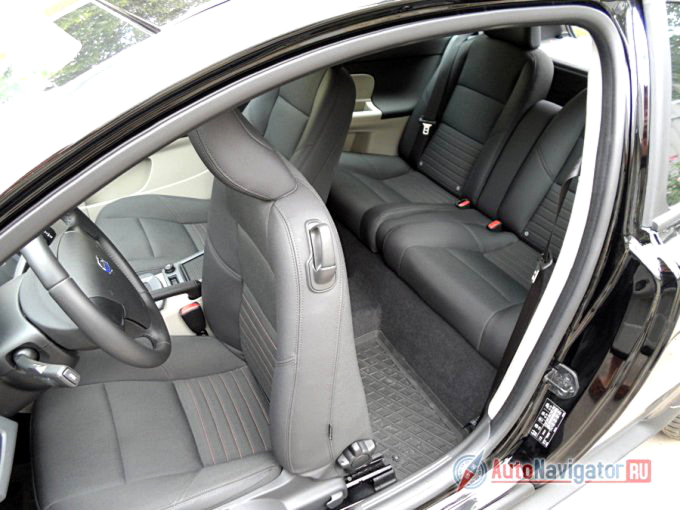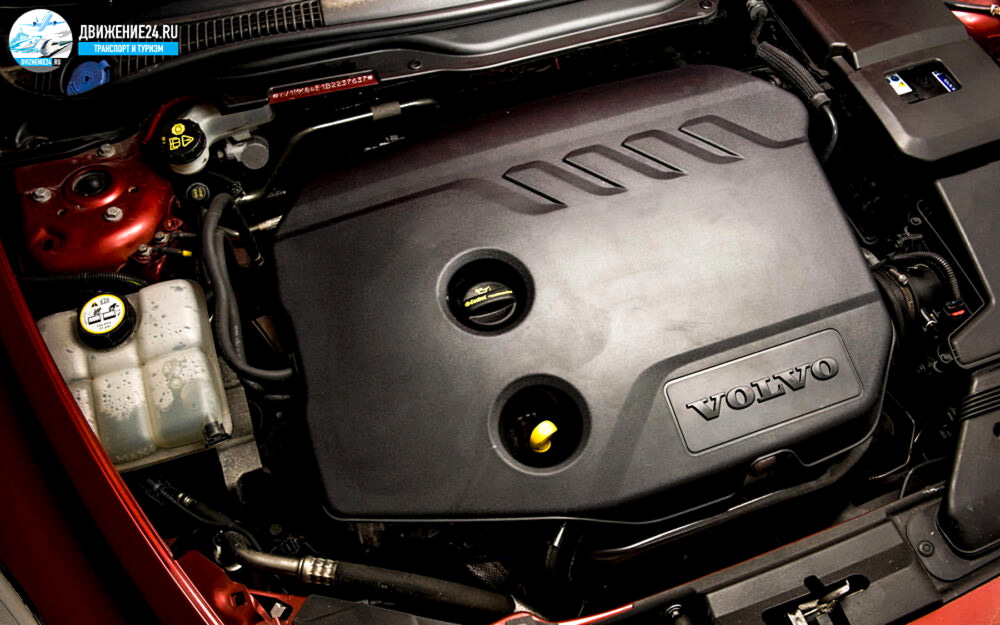Test drives and reviews of the Volvo C30 (Volvo C30). Volvo C30
Material content
On ergonomics and comfort
Looking at the Volvo C30, you immediately understand that the car is not designed to carry bulky luggage, transport all relatives to the country, and frequent trips to nature. The element of the hatchback is the city. It is in the metropolis that all the charms of the C30 are revealed.

The interior of the hatchback is not very spacious, but rather ergonomic: there are no extra controls that distract attention from “piloting”, all the necessary levers, buttons, hooks, glove boxes, cavities for small luggage are at hand. The front panel looks simple and stylish – it has remained unchanged since the pre-styling version of the car.

There is a rear seat, but there is not enough space on it: yes – a couple of girls or slender guys in the gallery will feel good, but larger people can get claustrophobic. The ideal use of the rear seat is to transport children or bags from supermarkets.
The trunk also cannot boast of capacity – to put it mildly. Even when I met the C30 in 2007, I was shocked by its volume – only 433 liters. It’s good that the back of the rear seat can be folded and get quite a tolerable luggage compartment.

Despite the disadvantages that, in fact, stem from the design and purpose of the car, the hatchback is easy to use. For several days of owning it, I have never experienced any discomfort. Everything is simple, understandable, predictable and safe.
Video
Behind the glass
..until you fold down the rear seats.
The trunk of the “C30” is not too big….
The MOST advantageous angle of the “thirty” is 3/4 behind. You look full face – “Volvo” as “Volvo”. Respectable car, only small. You come in from the side – elements that seem atypical for the Swedish brand, such as an arched roof, begin to appear. And the food is really original. Gorgeous taillights, the base of which flows into a spectacular “thigh” that evokes associations with nothing less than a “Porsche 911”… The rear window, which is also a tailgate, is impressive. This is the brightest design element. Checked. I purposely parked my car in a busy Palma square (the “C30” test took place on the Spanish island of Mallorca) and watched the passers-by. The lion’s share of onlookers who examined the hatchback “Volvo”, spinning near the rear window, admiring its exotic design.
No doubt, it looks nice. Moreover, such a transparent stern has not only aesthetic advantages, but also practical ones. Thanks to the glass reaching to the bumper, the rear view is such that you can park the car with an accuracy of a millimeter. Therefore, I consider the parking sensors that my C30 was equipped with to be a waste of money.
As for other “driver assistants”, the BLIS system is designed to facilitate maneuvering in the city and increase safety. It signals the presence of obstacles in the “dead zone” of visibility. The IDIS device, for the same security, silences the ringing of the built-in telephone (option) if the owner of the “C30” is performing a maneuver at that moment.
Hatchback “Volvo” is far from sporty. It’s just a fast comfortable car.
Operating costs
Maintenance is required every 12 months or 20,000 km, except for the D5 and T5 models, which extend this period to 12 months and 28,000 km. Maintenance prices range from 22,000 rubles for petrol cars (25,000 rubles for diesels) to 120,000 rubles for a model with a diesel particulate filter at its sixth service, or 160,000 if a new timing belt is also required.
This sixth check is also the biggest ever for petrol C30s, with prices peaking at £76,000. All engines, except for gasoline 1.8, require the timing belt to be replaced every six to ten years or 115,000 – 240,000 km, which costs about 70,000 rubles, of course, we are talking about service from authorized dealers. New brake fluid is required every two years (7,000 rubles), while coolant and recharging the air conditioner cost 7,000 and 10,000 rubles, respectively.
